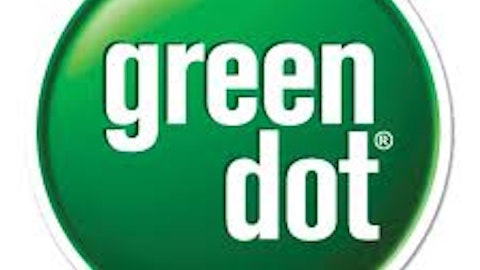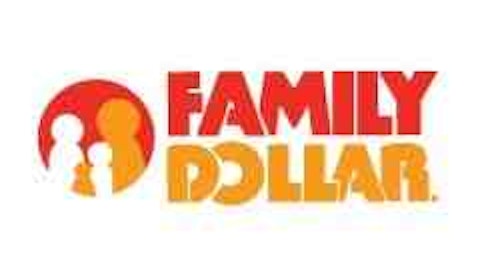For the past few years, the U.S. economy has been struggling, and though now it seems to be in the process of recovering, the retail industry still has some gains to realize. Customers are sensitive to macroeconomic factors, including interest rate hikes, credit availability, increase in fuel costs, high household debts, and high unemployment levels. However, the holiday season coming in and expectations about back-to-school season give some hope to investors.
I will analyze how things are looking for three of the biggest U.S. retailers.

Kohl’s Corporation (NYSE:KSS) has more than 1,150 department stores across the U.S. and Target Corporation (NYSE:TGT)’s middle-income customers featuring not only nationally recognized brands but also private-label and exclusive-label goods. In addition, Kohl’s Corporation (NYSE:KSS) offers a selection of goods beyond what is available in the stores though its e-commerce site.
Kohl’s Corporation (NYSE:KSS) first-quarter figures do not show much change from the year ago quarter, but look healthy. Net sales totaled $4.24 billion compared to $4.20 billion in the first quarter of 2012. The main reason behind the results was weak sales during the holiday season, which increased the already high inventory levels. Something tells me the company is facing problems with its marketing strategies and pricing to attract customers. However, the stock has slowly appreciated over the first half of 2013.
Another negative aspect is the fact that Kohl’s Corporation (NYSE:KSS) lacks international exposure, therefore increasing its dependence on the U.S. economy, which is improving but has not yet fully recovered. Low consumer confidence in a highly competitive environment is never encouraging.
On the bright side, Kohl’s Corporation (NYSE:KSS) seems to recognize these issues and has introduced a new merchandise team and established an inventory visibility project. The assortment of brands, especially the exclusive ones to Kohl’s Corporation (NYSE:KSS), are an excellent feature that the company aims to exploit. Additionally, the company’s e-commerce sales have been increasing significantly over the last four years.
Too big to fail
Wal-Mart Stores, Inc. (NYSE:WMT) is the largest retailer in the world with over 10,000 stores, operating in various formats. Businesses are conducted in three segments: Wal-Mart US, Wal-Mart International, and Sam’s Club.
The company announced earnings of $1.14 per share for its first quarter, a 4.6% jump from the prior-year quarter. Revenue reached $114.2 billion, up 1%. The main drivers were top-line growth and productivity improvements.
Wal-Mart Stores, Inc. (NYSE:WMT) has a gigantic scale, being the biggest private employer in the world and planning to hire more than 100,000 people in the next five years while helping establish more full-time positions. Internationally, it has presence in 26 countries with plans to keep expanding. Sales have continuously increased over the past few years, which supports the company’s expansion plans.
Additionally, management is paying special attention to its e-commerce platform, mainly in China. In the U.S., it is focusing on increasing the number of smaller stores to address the threat from dollar stores. Plus, It is increasing its offerings of U.S. products, which can help revitalize the economy.
Financially, Wal-Mart’s balance sheet showed improvements from the year-ago quarter. The company enhanced shareholder returns by repurchasing $2.2 billion in shares and paying $1.6 billion in dividends for the quarter. On the negative side, the recent bribery allegations from some countries is hurting the company’s reputation.
Target Corporation (NYSE:TGT) has more than 1,500 stores in North America, from CityTarget to SuperTarget.
First-quarter results did not meet with expectations, which notes the stiff competition Target Corporation (NYSE:TGT) is facing. U.S. segment operating margin contracted 0.6% to 7.5%, whereas operating income decreased 7.5% to $1.24 billion compared to the first quarter of 2012. Moreover, the company is not geographically diversified, which poses more risks due to the dependency on the U.S. and Canadian economy. However, Target Corporation (NYSE:TGT) is eyeing the opportunity to expand in Latin America.
In the longer term, Target Corporation (NYSE:TGT)’s new merchandise assortments, compelling pricing strategy, and efficient marketing should help boost sales. Here I have to mention the P-fresh remodel program, Pharmacy rewards program, and 5% REDcard Rewards program. Moreover, the company made some shareholder-friendly moves as it bought back about $547 million in shares and paid dividends of $232 million.
Most of the revenue for Target comes from retail, which offers a great assortment of products from various brands, including private label. So, a pick up in the economy should push sales up. A smaller percentage of revenue comes from branded proprietary credit cards and although these are important in terms of customer loyalty, they will not make a huge difference.
Conclusion
In general, the industry did not have a great quarter as sales were scarce in a context of low consumer confidence. For this reason, geographic diversification makes Wal-Mart a much safer investment. Its expansion plans reinforce this statement and should provide earnings growth in the long run.
Kohl’s high inventory level remains a major concern, so even though e-commerce seems to be showing some momentum, I am still not sure about this stock.
Target, on the other hand, seems to have good initiatives for the longer term, but its strategy still needs to go a long way until it proves successful.
The article U.S. Retailers: Which One Should You Choose? originally appeared on Fool.com and is written by Louie Grint.
Louie Grint has no position in any stocks mentioned. The Motley Fool has no position in any of the stocks mentioned. Louie is a member of The Motley Fool Blog Network — entries represent the personal opinion of the blogger and are not formally edited.
Copyright © 1995 – 2013 The Motley Fool, LLC. All rights reserved. The Motley Fool has a disclosure policy.





